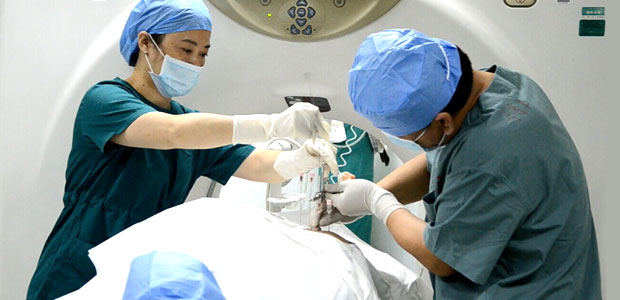Particle Implantation, also called Particle knife, is a brand-new minimally invasive treatment against deficiencies of the international medical surgery and radiotherapy nowadays. Energy of the rays and amount of the particles are determined by the character, size and location of the tumor. Under the guidance of imaging equipment, I125 seeds will be directly placed into the tumor or possible paths of metastatic tissues. These implanted particles will keep emitting γ-ray within the tumor, targeting to the cancer cells accurately, just as surgical excision do.
Video of Particle Implantation
| Items of Comparison | Particle Implantation | Traditional Radiotherapy |
| Safety | High safety | High risk |
| Damage Degree | Millimeter minimally invasive; only takes effect in the tumor and do less harm to normal issues; few toxic side effects and complications. | Radioactive rays will do harm to surrounding normal issues when irradiating at the tumors, which will result in decrease of human immunologic function and causing some severe toxic side effects like nausea, vomiting, diarrhea and loss of appetite, etc. |
| Drug Concentration | Small irradiation area, continuously aim to the tumor only, target oriented, high radiation dose (2-3 times higher than external radiotherapy); | Large irradiation range, high energy rays go through the skin and tissues first, then reach to the tumor with small dose left; |
| Treatment Duration | The duration of which lasts for 6 months, effectively reduces patient’s frequency to visit hospital for radiotherapy; | External radiotherapy is generally carried on 5 times a week, so a course of treatment last generally 1-2 months; |
| Curative Effect | The radiation of seeds to tumor last for 6 months, which ensures the cancer cells exposure to the rays evenly, effective to cancer in different stages, | External radiotherapy is fractionated irradiation, only works to part of cancer cells; |

Particle Implantation is being performed.
Lung cancer, prostate cancer, breast cancer, liver cancer, nasopharyngeal cancer, tongue cancer, parotid gland carcinoma, tonsil cancer and endometrial cancer, etc.
 viber
viber